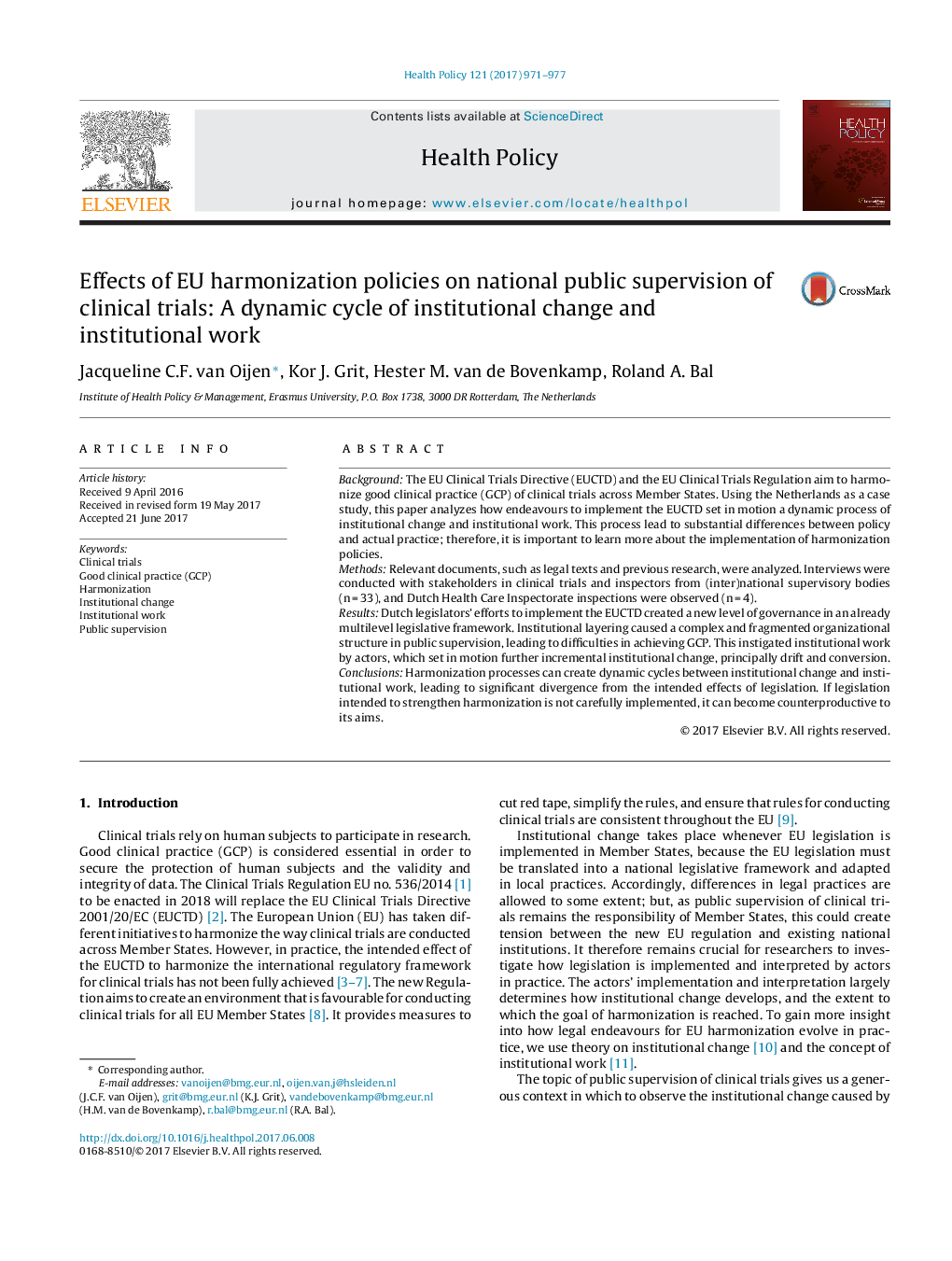| کد مقاله | کد نشریه | سال انتشار | مقاله انگلیسی | نسخه تمام متن |
|---|---|---|---|---|
| 5723376 | 1411446 | 2017 | 7 صفحه PDF | دانلود رایگان |
- Dutch legislators' efforts to implement EU legislation instigated institutional layering.
- Layering set in motion institutional work and further incremental institutional change.
- If not carefully implemented, EU legislation can become counterproductive to its aims.
- Analyzing institutional change can help us understand the consequences of harmonization.
BackgroundThe EU Clinical Trials Directive (EUCTD) and the EU Clinical Trials Regulation aim to harmonize good clinical practice (GCP) of clinical trials across Member States. Using the Netherlands as a case study, this paper analyzes how endeavours to implement the EUCTD set in motion a dynamic process of institutional change and institutional work. This process lead to substantial differences between policy and actual practice; therefore, it is important to learn more about the implementation of harmonization policies.MethodsRelevant documents, such as legal texts and previous research, were analyzed. Interviews were conducted with stakeholders in clinical trials and inspectors from (inter)national supervisory bodies (n = 33), and Dutch Health Care Inspectorate inspections were observed (n = 4).ResultsDutch legislators' efforts to implement the EUCTD created a new level of governance in an already multilevel legislative framework. Institutional layering caused a complex and fragmented organizational structure in public supervision, leading to difficulties in achieving GCP. This instigated institutional work by actors, which set in motion further incremental institutional change, principally drift and conversion.ConclusionsHarmonization processes can create dynamic cycles between institutional change and institutional work, leading to significant divergence from the intended effects of legislation. If legislation intended to strengthen harmonization is not carefully implemented, it can become counterproductive to its aims.
Journal: Health Policy - Volume 121, Issue 9, September 2017, Pages 971-977
